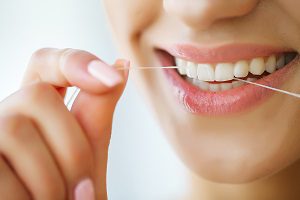How to properly brush and floss is one of the most important aspects of any home dental healthcare program. Taking good care of your teeth at any age is essential to long-term dental health and overall general wellness. Even though you are brushing your teeth on a daily basis, the question becomes whether or not you are doing it in the right way? Knowing how to brush and floss in the correct manner makes it more effective and keeps your teeth strong and healthy. Best of all, when you brush in the right way and floss correctly, you greatly reduce the chances of tooth decay and plaque buildup. This simply translates into better dental health.
Brushing For At Least Two Minutes
Here are a few tips on how to properly brush and floss. For example, always choose a toothpaste that has fluoride, so your teeth are better protected. Choose a soft or medium bristle brush so that the brushing you do is gentle to the teeth and gums. In terms of frequency, most dental care providers and professionals recommend brushing for at least two minutes each day. This simple step alone can make a substantial difference in your overall dental health and wellness. It also helps to improve dental hygiene and provides for better breath.
The Short Strokes
When brushing, hold the toothbrush at a 45° angle firmly near the gumline and use short gentle strokes. This should result in the toothbrush being moved back and forth consistently. Always make sure to get the teeth that are all the way in the back. The trick to getting the brushing process right is to stick with the short strokes. It is also important to brush the chewing surface of each tooth in a short back-and-forth motion. When brushing the front teeth, it is recommended to move the toothbrush up and down rather than sideways.
Flossing Should Be Gentle and Delicate

As a final note, it is always a good idea to brush your tongue and then begin to floss. When flossing, choose a piece of floss that is about 12 inches or longer. Hold it tight between fingers on each hand and then use the floss to begin removing food and particles from between teeth. As a note of caution, avoid pushing the floss to tightly down into the gums as this could cause bleeding, injury and pain. As with brushing, flossing should be gentle and delicate so as not to damage the teeth or gums. Follow these simple strategies and enjoy overall better dental health. Contact your Petaluma dentist, Dr. Amir Hosseini, at Petaluma Braces and Family Dentistry, today for more information.
